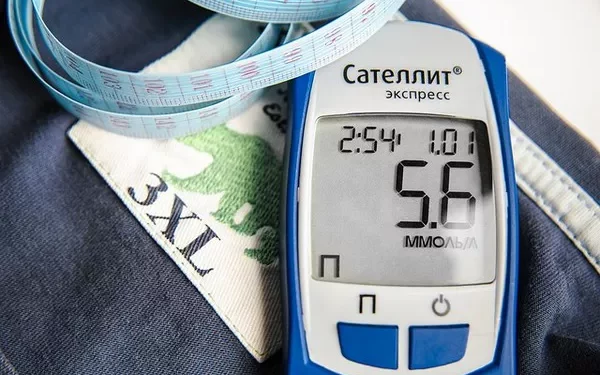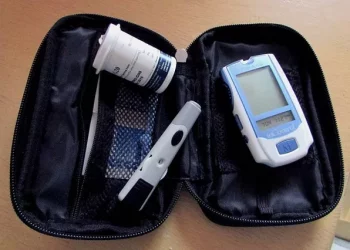Diabetes is a chronic condition that affects millions of people worldwide. It is characterized by elevated blood sugar levels, which, over time, can lead to serious complications such as heart disease, kidney damage, vision problems, and nerve damage. One of the most important tests used to manage and monitor diabetes is the hemoglobin A1C test. This test provides an average of a person’s blood sugar levels over the past two to three months and is a key indicator of long-term glucose control.
In this article, we will explore what the hemoglobin A1C test is, its significance in diabetes management, the average target range for healthy individuals and those with diabetes, the factors that affect A1C levels, and how to interpret the results. Understanding this marker is crucial for both healthcare professionals and patients in maintaining better control over diabetes and reducing the risks of complications.
What is Hemoglobin A1C?
Hemoglobin A1C (often abbreviated as A1C) is a blood test that measures the percentage of hemoglobin—an oxygen-carrying protein in red blood cells—coated with sugar (glucose). Red blood cells circulate in the bloodstream for approximately 120 days, and as they do, they pick up glucose. The more glucose in the blood, the more glucose attaches to the hemoglobin in red blood cells.
The A1C test reflects the average level of blood glucose over the previous two to three months, providing a long-term picture of a person’s glucose control. Unlike daily blood sugar tests, which measure glucose at a specific moment in time, A1C offers a broader view of blood glucose trends.
How is A1C Measured?
The hemoglobin A1C test is typically done in a laboratory setting, where a blood sample is taken from a vein in your arm. It can also be done with a fingerstick in a healthcare setting or at home, with a point-of-care device designed to measure A1C.
The result of the test is reported as a percentage. For example, an A1C of 6.5% means that 6.5% of the hemoglobin in the blood is coated with glucose. The A1C percentage is inversely related to the average blood glucose levels. The higher the A1C percentage, the higher the average blood glucose levels over time.
What Does A1C Indicate?
Hemoglobin A1C levels provide valuable insights into a person’s glucose control and the risk of developing diabetes-related complications. It is a key tool used by healthcare providers to:
Monitor Diabetes: For individuals diagnosed with diabetes, the A1C test helps to monitor how well blood sugar levels have been managed over time. A higher A1C may indicate that the person’s diabetes is not well controlled and that adjustments in their treatment plan may be necessary.
Diagnose Diabetes: The A1C test can also be used as a diagnostic tool to detect prediabetes and diabetes. Elevated levels may suggest an increased risk of developing diabetes, even before symptoms become apparent.
Assess Risk of Complications: A higher A1C is associated with an increased risk of complications such as cardiovascular disease, kidney damage, nerve damage, and vision problems. Regular A1C monitoring is essential to prevent or slow the progression of these complications.
Target A1C Levels for People with Diabetes
For most people with diabetes, the goal is to maintain their A1C levels as close to normal as possible without risking severe hypoglycemia (low blood sugar). The American Diabetes Association (ADA) recommends the following target A1C levels:
For nonpregnant adults with diabetes: The general target A1C goal is below 7%. This helps to reduce the risk of diabetes-related complications while minimizing the risk of hypoglycemia.
For older adults: A less stringent target may be appropriate for older adults or those with a limited life expectancy, multiple chronic conditions, or a history of severe hypoglycemia. In these cases, a target A1C between 7.5% and 8% may be more appropriate.
For pregnant women with diabetes (gestational diabetes): The target A1C level is typically below 6% to prevent complications for both the mother and the baby.
Factors That Influence Hemoglobin A1C Levels
Several factors can affect A1C levels, and it is important to consider these when interpreting test results. While A1C is a valuable tool in managing diabetes, it is not always a perfect measure of glucose control. Some factors that can impact A1C results include:
Hemoglobin Variants: Certain hemoglobin conditions, such as sickle cell disease or thalassemia, can affect the A1C test. In these cases, the A1C may be falsely low or high. Specialized testing may be necessary to get an accurate picture of glucose control.
Anemia: Anemia, or a low red blood cell count, can also influence A1C results. If a person has anemia, they may have a falsely low A1C, as fewer red blood cells are available to bind with glucose.
Kidney Disease: People with kidney disease may have higher-than-normal A1C levels, even if their blood sugar control is good. Kidney disease can affect the life span of red blood cells, which in turn affects the A1C result.
Age and Gender: A1C levels may vary with age and sex. Older adults may have higher A1C levels than younger people due to natural changes in glucose metabolism over time. Women may also experience slight variations in A1C levels compared to men.
Ethnicity: Some ethnic groups may have higher average A1C levels even with similar glucose control. For example, African Americans, Hispanics, and Asians may have a higher A1C compared to individuals of European descent, possibly due to genetic factors.
Dietary Factors: Diet plays a significant role in managing blood sugar levels. High carbohydrate intake, especially from refined sugars, can spike blood glucose levels and raise A1C over time. On the other hand, a well-balanced diet with controlled portion sizes can help maintain healthy A1C levels.
Medications: Certain medications, including corticosteroids, antipsychotic drugs, and some HIV treatments, can raise blood glucose levels, thus increasing A1C. Some diabetes medications, like insulin or oral hypoglycemic agents, are specifically designed to help lower A1C by improving blood sugar control.
Exercise: Regular physical activity helps to improve insulin sensitivity and lower blood glucose levels, which can in turn reduce A1C. Inactivity or sedentary behavior can result in higher A1C levels due to poor glucose metabolism.
Stress and Illness: Acute illnesses, infections, and stress can lead to increased blood glucose levels, even in people without diabetes. This can temporarily elevate A1C levels, even if a person’s long-term blood glucose control is generally good.
Interpreting A1C Results
A1C results are generally categorized into different ranges that reflect the risk of developing diabetes-related complications:
Normal (non-diabetic): An A1C of below 5.7% is considered normal and suggests healthy blood glucose regulation. People in this range have a lower risk of developing diabetes and related complications.
Prediabetes: An A1C between 5.7% and 6.4% suggests that a person is at increased risk for developing diabetes. This stage is known as prediabetes, and with lifestyle changes (such as diet and exercise), it is possible to prevent or delay the onset of diabetes.
Diabetes: An A1C of 6.5% or higher indicates diabetes. For individuals with diabetes, the goal is to keep A1C levels below 7% to prevent complications, though individual goals may vary.
What to Do If Your A1C Is High
If your A1C is higher than the target range, it is essential to work with your healthcare provider to develop a plan for improving blood glucose control. Here are some common steps that may be recommended:
Review Your Diet: A diet rich in whole foods, fiber, lean proteins, and healthy fats while reducing the intake of processed foods, sugars, and high-carb meals is key in lowering A1C. Your healthcare provider may refer you to a registered dietitian for personalized advice.
Increase Physical Activity: Regular exercise, particularly aerobic and strength-training activities, can help improve insulin sensitivity and reduce blood sugar levels. The ADA recommends at least 150 minutes of moderate-intensity aerobic activity per week, along with muscle-strengthening exercises.
Monitor Blood Sugar Regularly: Frequent blood glucose monitoring helps to keep track of fluctuations and allows you to make adjustments in diet, exercise, and medications accordingly.
Medication Adjustments: If lifestyle changes alone are not sufficient to control blood glucose, your doctor may recommend adjustments in medications. This may include insulin therapy or oral medications designed to regulate blood glucose.
Address Other Health Conditions: Managing comorbidities such as hypertension and high cholesterol is also crucial, as these conditions can exacerbate the effects of diabetes and lead to further complications.
Conclusion
The average hemoglobin A1C is an essential marker for understanding long-term blood glucose control in individuals with diabetes. It provides a clear picture of a person’s glucose management over the past few months, helping to guide treatment decisions and lifestyle changes. Regular monitoring of A1C levels, along with attention to diet, exercise, medication, and overall health, can help reduce the risks of complications associated with diabetes and improve quality of life.
As with any medical test, interpreting A1C results should be done in conjunction with other clinical findings and individual health factors. With the right care, education, and support, it is possible to achieve optimal blood glucose control and live well with diabetes.
Related topics:
What Is Random Blood Sugar Level Range?


























